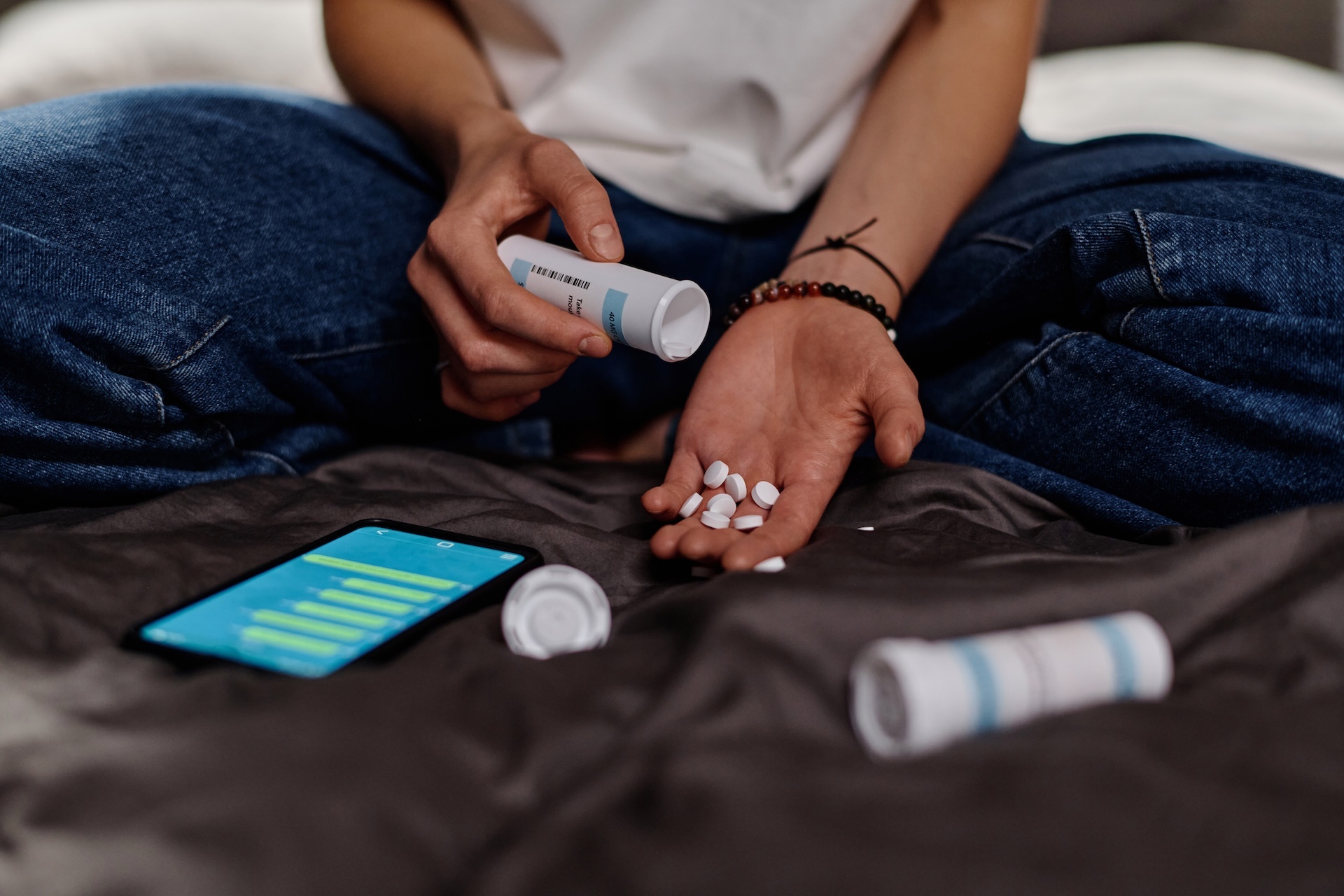Can Xanax Treat Social Anxiety Disorder? Benefits & Risks


Can Xanax treat social anxiety disorder? Learn how it works, its short-term benefits, long-term risks, and safer alternatives for managing anxiety.
Social Anxiety Disorder (SAD) can feel overwhelming—making everyday interactions feel like insurmountable obstacles. For some, medications like Xanax (alprazolam) are seen as a quick fix to ease intense social fears. But can Xanax treat social anxiety disorder safely and effectively?
At The Forge Recovery Center, we understand how complex mental health and substance use issues can be. Whether you’re exploring treatment options for yourself or someone you care about, it's important to weigh both the benefits and the risks. In this article, we will explore how Xanax works, its potential dangers, and safer, long-term alternatives.
Understanding Social Anxiety Disorder

Social Anxiety Disorder (SAD) is more than just occasional nervousness or shyness. It’s a chronic mental health condition where social interactions trigger intense fear, embarrassment, or self-consciousness—so much so that it interferes with daily life. People with SAD may avoid work meetings, social events, or even simple interactions like making a phone call or ordering food. This avoidance often leads to isolation, reduced opportunities, and in many cases, co-occurring issues like depression or substance use.
According to PubMed, social anxiety is one of the most common anxiety disorders, affecting approximately 7% of the U.S. population at any given time. Despite its prevalence, it’s often misunderstood or downplayed, which delays proper diagnosis and treatment.
Common symptoms include:
Intense fear of being judged or scrutinized
Avoiding social situations, sometimes for months or years
Physical symptoms like sweating, trembling, or rapid heartbeat in social settings
Constant worry about saying or doing something embarrassing
As Drugs.com and the New York Post highlight, untreated SAD can significantly affect relationships, career advancement, and overall quality of life.
Common treatment approaches include:
Cognitive Behavioral Therapy (CBT): Considered the gold standard, CBT helps patients reframe negative thought patterns.
Medication: Selective Serotonin Reuptake Inhibitors (SSRIs) like sertraline or paroxetine are often prescribed as first-line treatments.
Lifestyle interventions: Support groups, mindfulness practices, and exposure therapy also play important roles.
At The Forge Recovery Center, we understand that effective treatment means more than just managing symptoms. It means addressing the root causes of anxiety with a personalized, compassionate plan tailored to your life and needs.
Xanax: Mechanism of Action

Xanax (alprazolam) is a fast-acting benzodiazepine prescribed primarily for anxiety and panic disorders. It works by enhancing the effect of a neurotransmitter in the brain called gamma-aminobutyric acid (GABA)—a natural chemical that slows brain activity and promotes calm.
When you're dealing with social anxiety, your brain is often in a hyper-alert state, overreacting to perceived threats in social situations. Xanax helps reduce that overactivity by increasing GABA's calming effects. This results in quick relief from acute anxiety symptoms like racing thoughts, muscle tension, and rapid heartbeat.
In terms of its role in the central nervous system (CNS), Xanax acts as a depressant. That doesn’t mean it makes you emotionally depressed—it means it slows down the CNS, which controls many involuntary functions like breathing, heart rate, and emotional response. This is why users often feel sedated, relaxed, or even sleepy after taking it.
However, this powerful calming effect is also why Xanax can become dangerous when misused. Because it works so quickly and effectively, it has a high potential for dependence—especially when used without medical supervision or over long periods.
At The Forge Recovery Center, we recognize the appeal of fast-acting medications like Xanax. But we also know that true healing requires more than temporary relief. Understanding how Xanax works is the first step in making informed, safe decisions about your mental health treatment.
Are You Struggling with Mental Health or Addiction?
We Can Help. Call Us Now!
CALL: 877-839-1772
Efficacy of Xanax in Treating Social Anxiety Disorder
When it comes to managing social anxiety disorder (SAD), Xanax is often seen as a quick fix—but its long-term effectiveness is limited. While some people experience short-term relief, clinical research suggests that Xanax is not the most effective or safest option for treating SAD in the long run.
Xanax can reduce symptoms quickly, often within 30 minutes. This makes it useful in situations where immediate relief is necessary—such as public speaking or confronting a high-stress social event. However, this benefit comes with a cost: the effect is short-lived, and the brain can develop a tolerance quickly, requiring higher doses for the same effect.
A review of clinical studies on NCBI confirms that while benzodiazepines like Xanax may help with acute anxiety, they do not address the root causes of social anxiety and are associated with a high risk of dependency, withdrawal symptoms, and cognitive impairment.
The American Psychiatric Association recommends SSRIs (Selective Serotonin Reuptake Inhibitors)—such as paroxetine or sertraline—as first-line pharmacological treatments for SAD. These medications build up gradually in the body and work by regulating serotonin levels, which play a role in mood and anxiety. Unlike Xanax, SSRIs are safer for long-term use and do not carry the same risk of dependence.
In comparison:
Xanax: Fast-acting, but habit-forming with diminishing returns over time.
SSRIs/SNRIs: Slower onset (usually 4–6 weeks), but more sustainable for long-term treatment.
Buspirone and Beta-Blockers: Non-addictive alternatives used in specific cases, like performance anxiety.
At The Forge Recovery Center, we’ve seen how reliance on quick-relief medications like Xanax can lead to deeper struggles with addiction. We focus on evidence-based, long-term solutions—like therapy combined with appropriate medication—to help you or your loved one truly heal from social anxiety, not just mask the symptoms.
Benefits of Using Xanax for SAD
While Xanax isn’t considered a first-line treatment for Social Anxiety Disorder (SAD), it does offer specific short-term benefits—especially in high-stress, anxiety-triggering situations.
Rapid Onset of Action
One of Xanax’s most notable advantages is how quickly it works. Xanax typically begins to take effect within 15 to 30 minutes after ingestion, with peak effects occurring around one to two hours later. This rapid onset can be especially helpful for people with situational social anxiety, such as fear of public speaking or attending a large gathering.
In contrast, SSRIs and SNRIs—commonly prescribed for long-term management of SAD—can take weeks to build up in your system before you start to feel any relief. For those needing immediate anxiety relief in a specific moment, Xanax can serve as a temporary solution.
Effectiveness in Acute Anxiety Episodes
For people with severe, paralyzing episodes of social anxiety, Xanax can be effective in short bursts. As NCBI research highlights, benzodiazepines like Xanax work by enhancing GABA activity in the brain, helping calm the central nervous system. This makes it easier to function in anxiety-inducing situations—whether it’s walking into a job interview or speaking up in a crowded room.
That said, the benefit is limited to acute, one-time use, not daily symptom management. Long-term reliance increases the risk of tolerance, dependence, and withdrawal—concerns that we take seriously at The Forge Recovery Center.
We understand the temptation to seek fast relief when anxiety hits hard. And while Xanax may offer that, we help clients develop personalized strategies that don’t just silence anxiety temporarily—but build long-term confidence and stability without dependence.
Are You Struggling with Mental Health or Addiction?
We Can Help. Call Us Now!
CALL: 877-839-1772
Risks and Drawbacks of Using Xanax for SAD
While Xanax can provide short-term relief for symptoms of social anxiety disorder (SAD), its risks often outweigh the benefits—especially when used beyond occasional or situational needs.
Potential for Dependence and Withdrawal Symptoms
Xanax has a high potential for dependence, even when taken as prescribed. According to Drugs.com and Wikipedia, the brain can quickly develop a tolerance to Xanax, meaning users need increasing doses to feel the same calming effect. This opens the door to misuse, physical dependence, and eventually addiction.
If you stop taking Xanax abruptly, withdrawal symptoms can be intense—even dangerous. These may include:
Rebound anxiety (worse than before)
Insomnia
Irritability or aggression
Panic attacks
Seizures in severe cases
As the Wall Street Journal has reported, withdrawal from benzodiazepines like Xanax can take weeks or even months, especially for long-term users, and often requires medical supervision.
Side Effects and Long-Term Health Considerations
In the short term, Xanax can cause side effects like:
Drowsiness
Dizziness
Slurred speech
Impaired coordination and memory
Long-term use adds more serious concerns. Chronic Xanax use is associated with cognitive decline, emotional blunting, and increased risk of falls or accidents—especially in older adults. There’s also growing evidence linking long-term benzodiazepine use to increased dementia risk, though more research is needed to confirm this.
For individuals already struggling with substance use or mental health issues, Xanax can complicate recovery—masking symptoms rather than addressing the root cause.
At The Forge Recovery Center, we’ve seen how easy it is for people to become trapped in a cycle of dependency while trying to manage their anxiety. That’s why we offer personalized, holistic treatment plans designed to help you overcome both the mental health challenges and the potential substance use risks that come with medications like Xanax. You deserve long-term relief—not a temporary escape that comes at a high cost.
Personalized Treatment Approaches at The Forge Recovery Center

At The Forge Recovery Center, we know that no two people experience social anxiety—or recover from it—in exactly the same way. That’s why we believe in personalized care plans that go beyond quick fixes like Xanax and focus instead on long-term, sustainable recovery.
Importance of Individualized Care Plans
Social Anxiety Disorder often stems from deeper emotional patterns, past trauma, or co-occurring conditions like depression or substance use. A one-size-fits-all solution doesn’t work. Our team takes the time to understand your unique background, triggers, and goals. From there, we develop a customized treatment plan that addresses your needs—not just your symptoms.
Whether you’re exploring treatment for the first time or looking for a better alternative to medication like Xanax, our approach is grounded in compassion, evidence-based practices, and your personal recovery journey.
Combining Medication with Therapy for Holistic Recovery
While medications like SSRIs or, in rare cases, carefully monitored benzodiazepines may be part of your care, they’re never the whole solution. We believe in combining medication with therapeutic interventions like:
Cognitive Behavioral Therapy (CBT): To help reframe anxious thoughts and develop healthier coping strategies
Group therapy: To build confidence in social interactions within a safe, supportive space
Mindfulness and stress reduction techniques: To help manage anxiety naturally over time
This balanced, holistic approach reduces reliance on habit-forming drugs like Xanax and helps you build real, lasting resilience.
Suppose you or someone you care about is struggling with social anxiety. In that case, The Forge Recovery Center is here to help you move beyond fear, dependence, and isolation—toward a life of clarity, strength, and connection.
Are You Struggling with Mental Health or Addiction?
We Can Help. Call Us Now!
CALL: 877-839-1772





